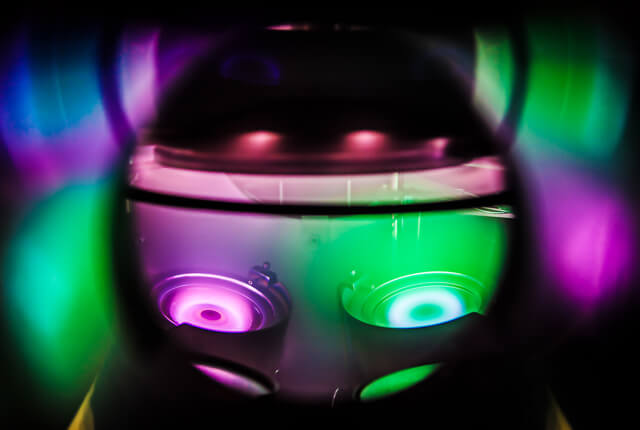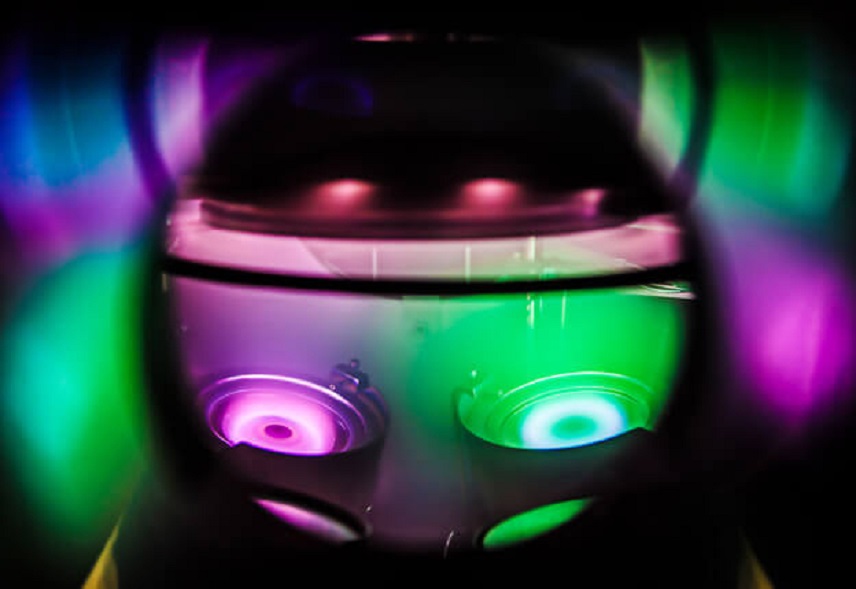Target magnetic field
The cathode operating voltage of magnetron sputtering decreases as the target surface magnetic field increases, and also decreases as the sputtering etch groove of the target surface deepens. The sputtering current increases as the sputter etch bath of the target surface deepens because the sputter etched surface of the target gets closer to the strong magnetic field of the permanent magnet behind the target. Therefore, the thickness of the target is limited. Thicker non-magnetic targets can be used in stronger magnetic fields. When the magnetic field strength increases above 0.1T, the effect of the magnetic field strength on the sputtering voltage is not obvious.
Ferromagnetic targets can affect magnetron sputtering. Since most of the magnetic lines of force pass through the inside of the ferromagnetic material, the magnetic field of the target surface decreases, and a high voltage is required to ignite the target surface. Unless the magnetic field is very strong, the magnetic target must be thinner than the non-magnetic material (the maximum value of the magnetron target should not exceed 3 mm, and the maximum value of the Fe sputtering target and Co sputtering target should not exceed 2 mm) to be able to illuminate and operate normally. During normal operation, the magnetic field strength of the surface of the magnetron target is about 0.025T-0.05T; When the target is sputter-etched, the magnetic field strength of the target surface is greatly improved, which is close to or greater than 0.1T.

Target Material
Under the condition of constant vacuum conditions, different materials and kinds of targets will have a certain influence on the normal voltage of magnetron sputtering. The normal sputtering voltage of commonly used targets (such as copper Cu, aluminum Al, titanium Ti) is generally in the range of 400-600V. Some sputtering targets (such as manganese Mn, chromium Cr, etc.) have higher sputtering voltages, generally need to be >700V or more to complete the normal magnetron sputtering process; and some targets (such as indium tin oxide ITO) have relatively low sputtering voltage, and a normal magnetron sputtering deposition coating can be realized at a voltage of about 200 volts.
Gas pressure
During the process of magnetron sputtering or reactive magnetron sputtering, the working gas or reactive gas pressure can have a certain influence on the magnetron sputtering voltage.
- Working gas pressure
When the environmental conditions of the vacuum equipment are determined and the control panel setting parameters of the target power source are constant, the density of the gas discharge plasma will synchronously increase as the working gas (such as argon) pressure (0.1~10 Pa) increases, which reduces the equivalent impedance of the plasma. The sputtering current of the magnetron target will gradually increase, and the sputtering operating voltage will also decrease synchronously.
- Reaction gas pressure
In the process of reactive magnetron sputtering coating, when the environmental conditions of the vacuum equipment are determined and the setting parameters of the control panel of the target power source are unchanged, the sputtering current of the magnetron target will gradually decrease (until “cathode poisoning” and “anode disappear”) as the pressure of the reaction gas (such as nitrogen and oxygen) gradually increases. At the same time, the sputtering operating voltage will gradually increase.
Cathode and anode spacing
When the cathode-anode spacing is too large, the internal resistance of the equivalent gas discharge is mainly determined by the plasma equivalent internal resistance. Conversely, when the cathode-anode spacing is too small, the internal resistance of the plasma discharge will be small. When the magnetron target ignited and enters the normal sputtering, if the cathode-anode spacing is too small, it may happen that although the sputtering current has reached the process setting value, the target sputtering voltage is still low.
Stanford Advanced Materials (SAM) Corporation is a global supplier of various high-quality sputtering targets such as metals, alloys, oxides, ceramic materials. All of the sputtering targets mentioned above are provided in SAM, please visit our website https://www.sputtertargets.net for more information.




